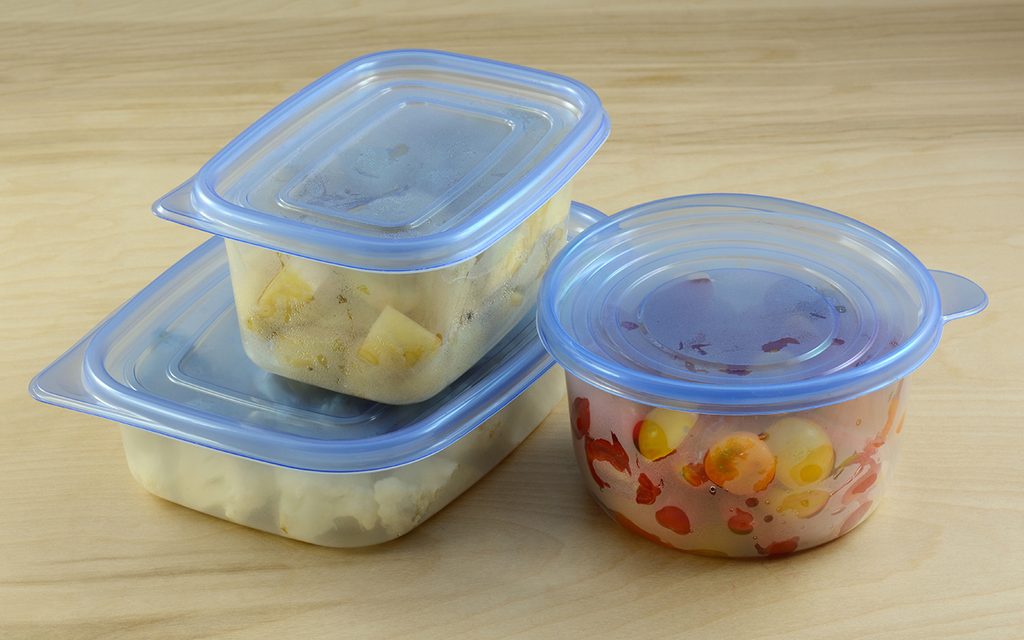Should I Worry About Condensation on Food Container Lids?
Updated: Nov. 18, 2022

What's up with all those water droplets on the lid of your leftovers? If you see them when you take a container out of the fridge, here's what you need to know.
As a former restaurant chef, I find it impossible to cook for one. I’m programmed to prepare enough food for a crowd! Even when I do my best, I end up with two to four extra servings. Luckily, my family loves leftovers, and cooking this way is an easy way to meal prep! The only speed bump I run into is those little water droplets that collect on the lids of our food storage containers. What’s the deal with those; are the contents still safe to eat? Find out which food containers you’ve been using wrong.
What causes condensation in food containers?
Those water droplets on the lid of your food container are actually just evidence of water vapor trapped inside the container. When you put leftovers into the fridge, everything cools down from the outside in. That process starts with the storage container itself, and because it gets cold first, it’s an easy target for the steam that’s released from the cooling food. That vapor wants to cling to the coldest surface around, so what you’re seeing is just science in action! That said, here are some items in your kitchen you should just throw out already.
How do you prevent condensation from forming?
You can’t change the cooling process, but you can prevent the water vapor from condensing on the lid. We always recommend covering leftovers to protect them from airborne organisms, but they don’t need to be covered while they’re cooling. In fact, it’s actually safer to keep hot food uncovered in the refrigerator to help the contents come down to safe temperatures as quickly as possible. After an hour or so, go ahead and cover the food like normal.
If you’re worried you’ll forget to put the lid on until it’s too late, consider buying a set of vented food storage containers. You can put the lid on, but leave the lid’s vent open while the food cools. Then, close it up when you’re back in the kitchen.
You’ll notice significantly fewer water droplets using either of these methods.
Bottom Line: Is the Food Inside Safe to Eat?
At the end of the day, that lid condensation might look unseemly, but it doesn’t make the food any less safe to eat. It’s possible that excess water could make your food a bit soggier than it was the day before, but that’s it. As long as you’re not making any of these food safety mistakes, you’ll encounter no problems enjoying your leftovers, condensation or not!
Every product is independently selected by our editors. If you buy something through our links, we may earn an affiliate commission.